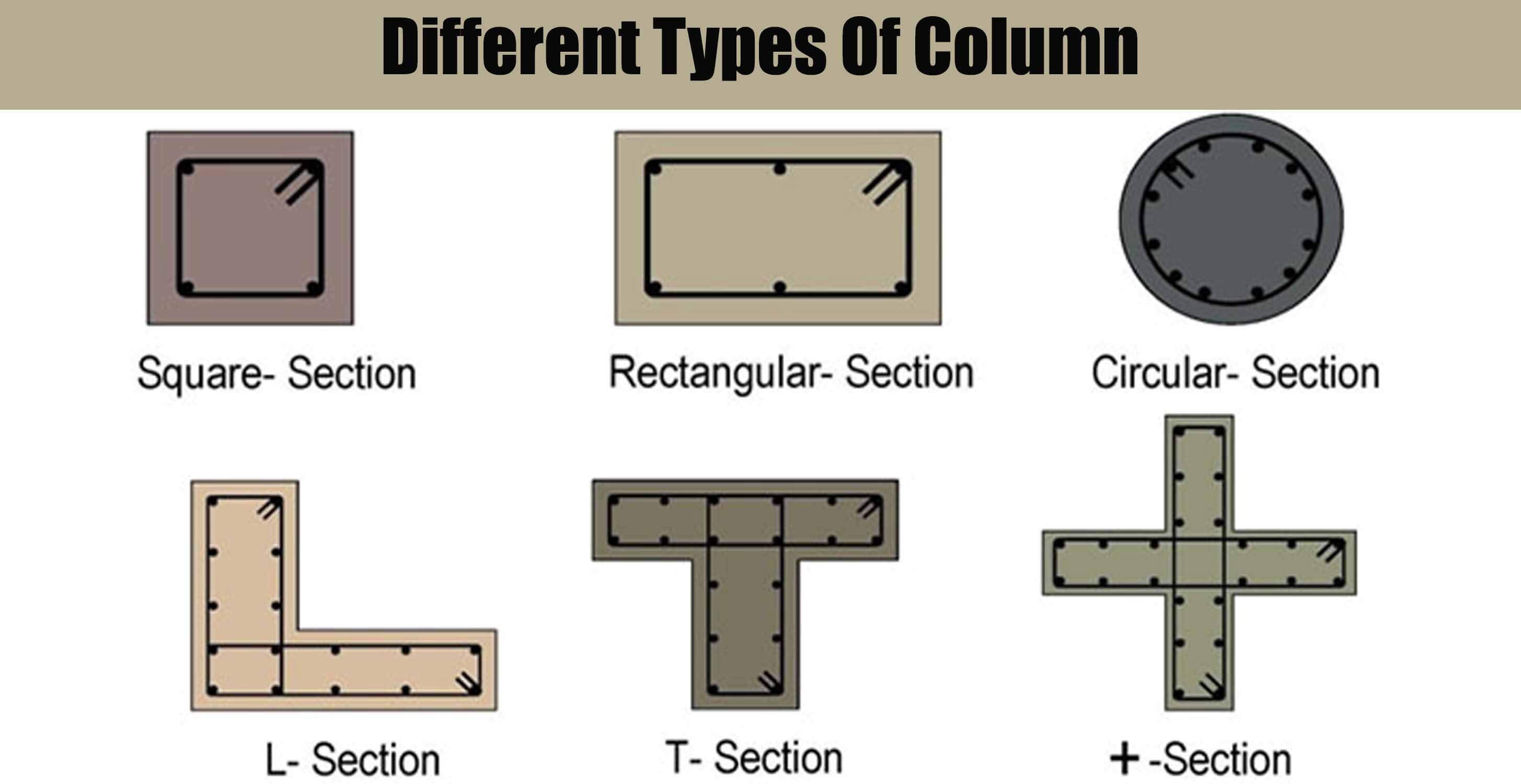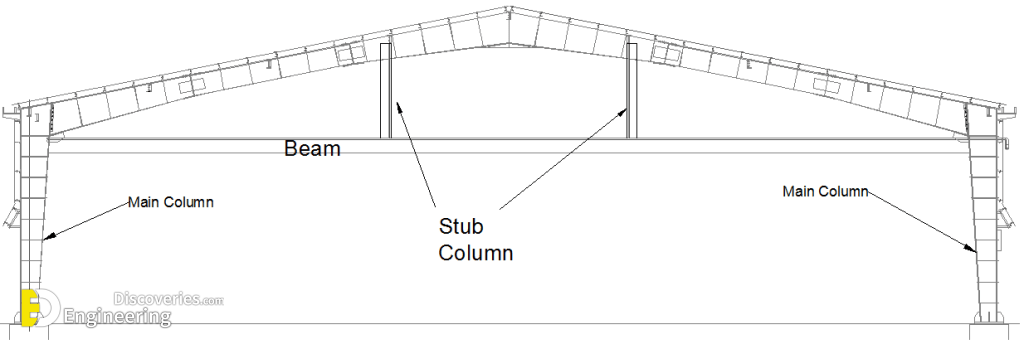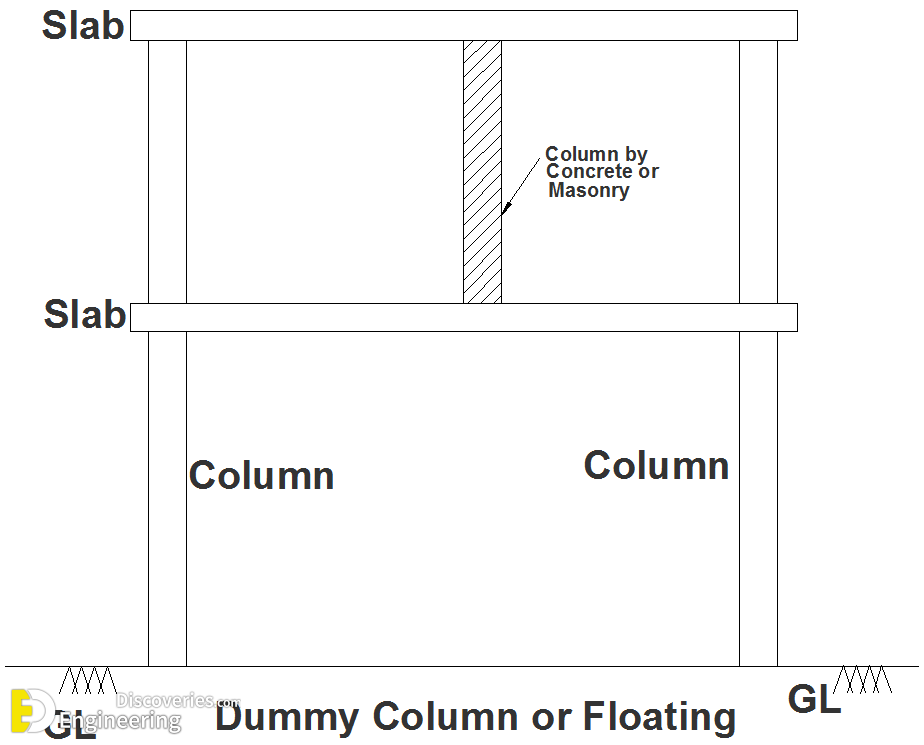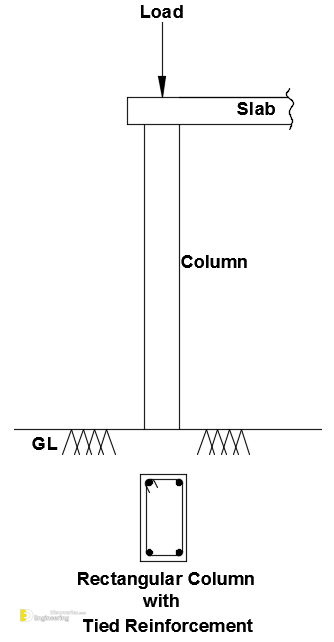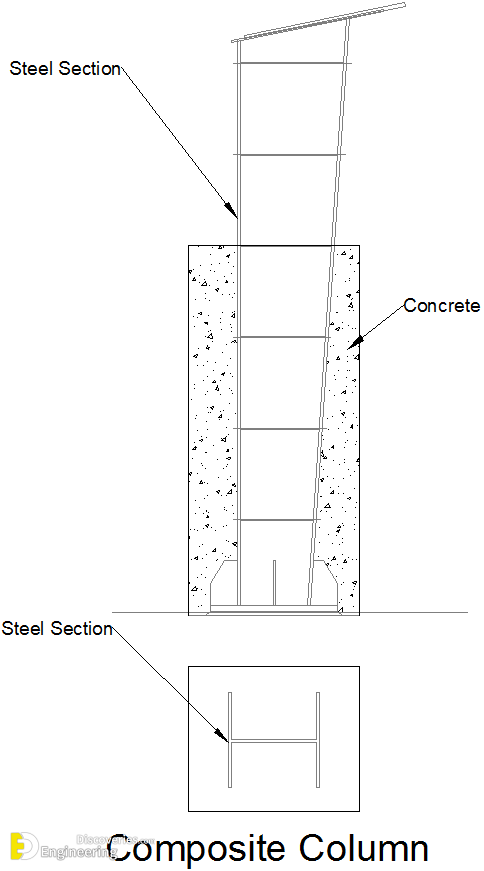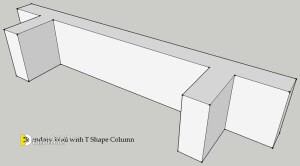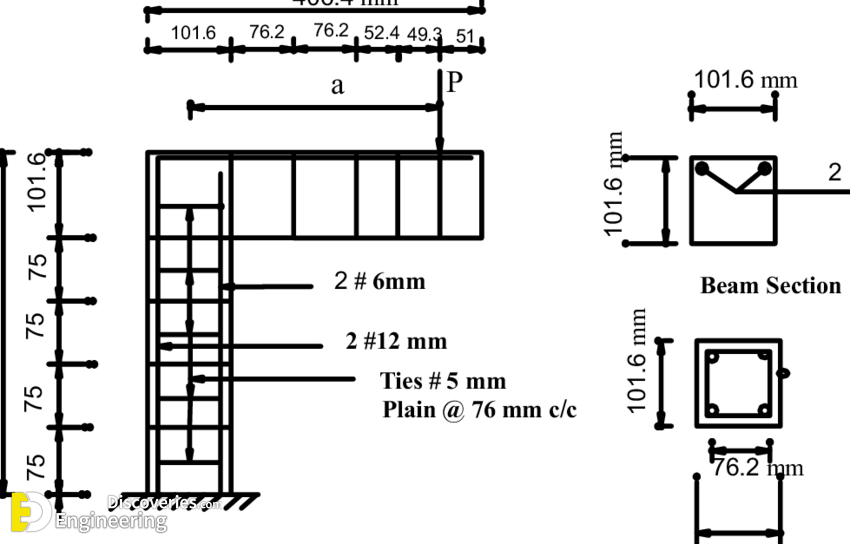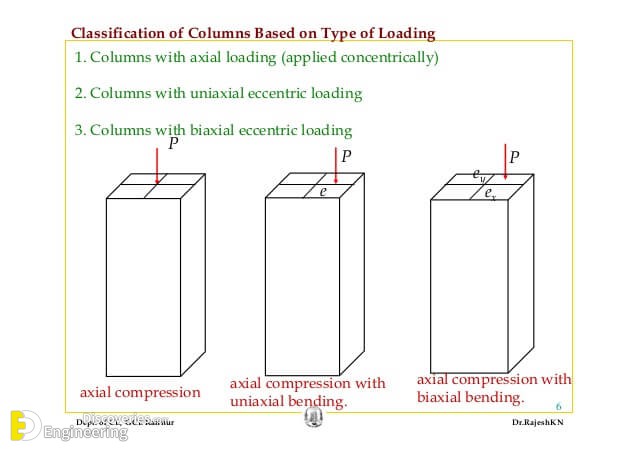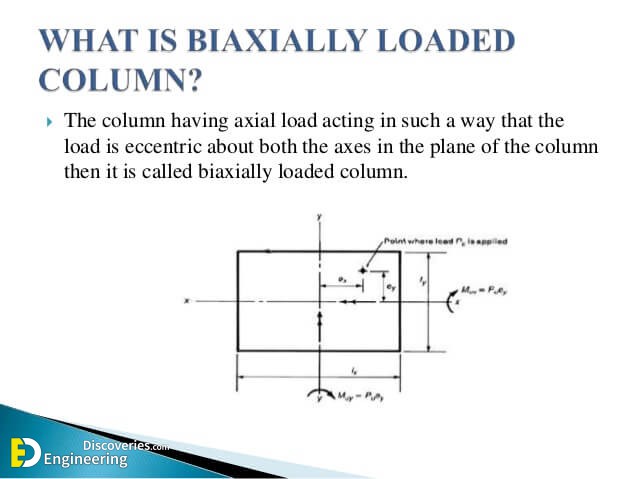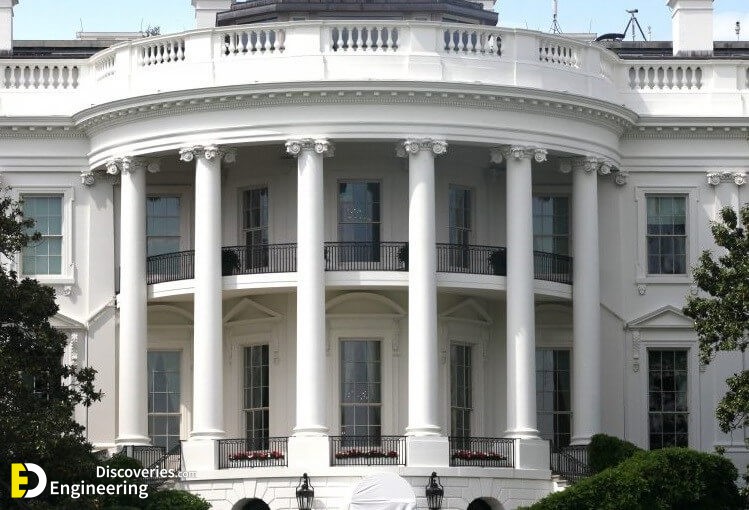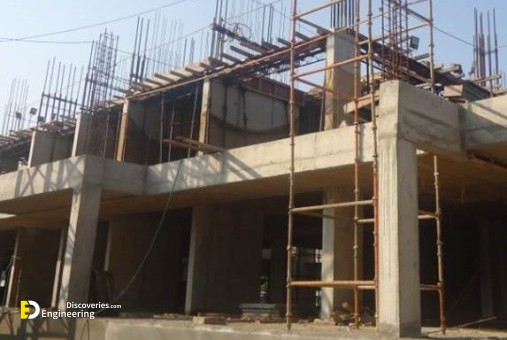A vertical member whose effective length is greater than 3 times Its least lateral dimension carrying compressive loads is called a column. Columns transfer the loads from the beams or slabs to the footings or foundations. The inclined member carrying compressive loads as In the case of frames and trusses is called struts. The pedestal is a vertical compression member whose effective length is less than 3 times Its least lateral dimension.
Purpose of Column?
We shall build up a small size structure by RR masonry at a certain height but the multi-story building cannot be constructed by RR masonry because the structure can able to transmit the heavy load to the foundation. So in this circumstance, we have to place column which can distribute the load to the foundation.
Basically, a column designed to distribute the compressive axial load & additional forces like snow, wind to the foundation eventually and it could be sustained the structure even in the earthquake or any other force majeure.
Types of Column
The column was classified based as below mentioned.
1- Based on Shape
2- Based on the load
3- Based on Slenderness ratio
Before to discuss the types of the column we rarely heard the following words Stub Column/Floating Column!. What is that?
Stub Column/Floating column – We knew that the function of the column is transferred a load of Slab/beam/Live Load to the foundation. But these type of column rests on the beam or slab & transferring the load to the slab or beam & it was transferring the load to the foundation. The length of the stub the column is very small but it will prevent the failure of structure like a column. The stub column shall be a steel or concrete element.
Floating column providing for the purpose of architectural, like partial the room or gives projection in elevation and also it is called a Dummy Column.
Stub Column
Dummy Column
Column – Based on Shape & Reinforcement
1- Square/Rectangle Column
2- Circular Column
3- Composite/Encased Column
4- T Type Column
5- Y Type Column
Square/Rectangular Column
Most of the building structure was constructed by square or rectangular column. Significantly both are having the same components and it is differ based on its architect view. These type of column was economically good and easy to do Shuttering, placing reinforcement & Concrete.
Circular Column
Always there is a debate has performed between Circular & rectangle/Square column which one is good? based on the strength, area occupancy, reinforcement placing, etc.,
From that, we have to consider the following things
1- The bending resistant is higher than square/rectangular column.
2- It occupies the lesser area.
3- Square/rectangular column reinforcement minimum 4 nos of steel will be placed in the corner but in a circular column provide more than 4 nos.
4- Mostly in building circular column provided for the aesthetic purpose.
5- Economically it is little high to compare to a square or rectangular column.
The pile foundation has made by circular column because the drilling made in circular shape & also these type of column using in bridges construction because of its good deflection resistance.
Composite/ Encased Column
A vertical structural element, with a combination of Steel Section & concrete it is called as Encased or Composite Column. The composite column mostly provided for Truss structure to avoid the steel corroded by any type of chemical.
T – Shape Column
These type of column having the same features like Square/Rectangular type column. Mostly it was provided along with retaining wall or boundary wall based on the design requirement. We knew that the brick or concrete wall-length should not construct more than 6m without the support of the column. If a boundary wall constructed by masonry than square or rectangular column placed in every 6 m at the same time if it is an RCC type wall than the column was designed as T shape.
Y-Shape Column
Generally, this type of column mostly using for Bridges construction. The design of bridges to sustain the dead load of the structure & live load of the vehicle motion, the load was eventually distributed to the column.
L – Type column
The L type column has used in boundary wall construction and heavy type L column was used in the turning of metro rail or bridges construction.
We discuss the types of column based on the shape but technically the column was differentiated based on the Design of load distribution & slenderness ratio.
Column – Based on Load
Axial Load Load
The entire load passes through the centre axis (Longitudinal axis)of the column which coincides with the X-axis, it is called Axial Load. The load shall be either compression or tensile load. In nutshell, the load acts on its perpendicular axis to its cross-section plane.
Eccentric Load Column
The load shall pass parallel to the centre axis (Longitudinal axis) of the member but act on of its cross-section that’s called Eccentric Load.
Uniaxial Load Column
The eccentric load act on either X-axis or Y-axis it is called Uni axial load column.
Bi-Axial Load
The eccentric load act on both axis called Biaxial load column
Column – Based on Slenderness Ratio
The length of the column divided by its radius of gyration, it is called Slenderness ratio of the column. The slenderness ratio is used to find out the buckling stress of the column. Based on the slenderness ratio the column the differentiated given below.
Long Column
Slenderness ratio of the column is greater than 12 it is called Long Column. The column may fail on both compression & buckling load.
Short column
Slenderness ratio of the column is less than 12 it is called Short column. The short column may fail by compression stress.
Almost we cover the different types of the column before to complete the discussion just we seen a glance at some other types of column.
Wood Column
We can see these types of a column in old building nowadays these types of a column was not used for construction.
Steel Column
When the structure was constructed using steel it is called Truss. Most of the production factory has constructed by Truss structure.
Vibro Stone Column
The procedure of stone column foundation is like as the pile foundation but in this, the crushed stone aggregates have poured up to the ground level instead of concrete. This technique was used to improve the strength of the soil.
The selected location has dug then the required size of coarse aggregates has poured into the hole & compacted well by the Vibro techno machine. The structure was constructed over the stone column.

